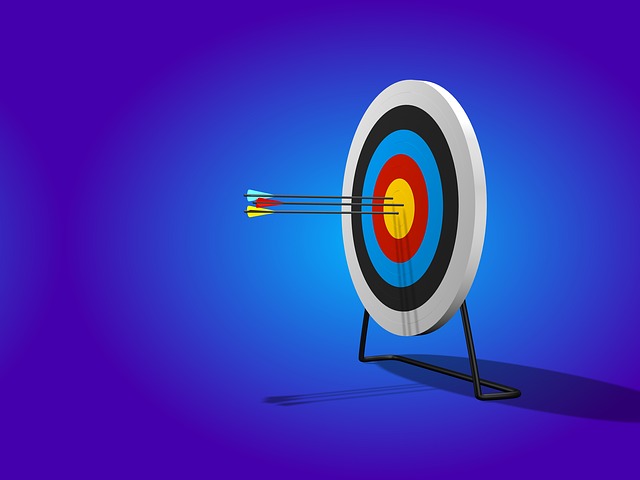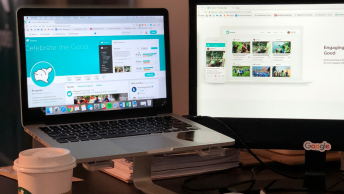Everyone in the content marketing industry knows about the customer funnel and its part in the customer journey. If you want to learn more about why top content marketers are ditching the funnel, read on.
Abandoning the Funnel
The customer funnel or purchase funnel is a model which represents a customer’s theoretical journey from having never heard of a product before to ultimately purchasing it. This classic consumer-focused marketing model breaks the customer journey down in a visual way.
It involves 5 steps:
- Awareness
- Discovery
- Intent
- Evaluation
- Buy
This funnel is a part of the marketing strategy of both business-to-business and business-to-consumer brands across almost every industry. However, experts, like Dusty DiMercurio, Director of Content Marketing and Social Media at Autodesk, think its time to go beyond the funnel when thinking about the customer journey.
“Content is valuable pre- and post-purchase. Marketers need to think about the whole journey. It’s fine to focus on the stages, but to do so in the context of the entire lifecycle.”
Focus On Customer Experience
New technologies and the ubiquitousness of social media have changed the way that people learn about products, experience them, and purchase them. 96% of Americans have made an online purchase during their lives, and 80% have done so during the past month. The rise of social media and online shopping has also changed the way that consumers interact with companies and brands, and what their expectations are. A major shift is occurring in the world of marketing and the companies that are most responsive to it are thriving.
The old funnel model and old marketing methods are product-centric. In order to survive, brands are having to become more audience-centric. Relationship-building with customers and your brand and understanding your demographic is key.
SEE ALSO: 4 Reasons Why Consumers View Brands As Relationships
Today’s Customer Experience Is Not A Funnel
According to DiMercurio, the modern customer journey is no longer a funnel, but an infinite loop. This doesn’t begin with a customer becoming aware of your brand and end with them buying a product. It is instead, far more dynamic. It continues as customers engage with your brand, learn more about your products and ethos, adopt your products, become loyal to your brand, and make future purchases.
This is not a static funnel with a decided end, but an organic customer journey which leaves room for customers to build a relationship with a brand and buy more products as their loyalty to it evolves.
Content Is Key
Content is key to the customer experience. Every department which is involved in any stage of the customer journey needs to be involved in and aware of the company content strategy. This strategy and your brand guidelines need to be consistent across the entire company.
SEE ALSO: How Brand Guidelines Make or Break Brand Management
How to Change Content Marketing Strategies To Suit The Modern Customer
DiMercurio says that:
“There are essentially three different kinds of content that a business creates.”
Being aware of these can help a company respond to the demands of modern customers, who have almost infinite choices for many types of products. This is what makes fostering brand loyalty so important. Without smart, responsive content marketing and a brand image that fosters customer loyalty, it can be hard to keep repeat customers and entice new ones. The three essential types of content in modern marketing are content that:
- builds brand affinity
- drives demand
- helps customers achieve a goal
Building Brand Affinity
Content that builds brand affinity is the content that helps customers understand your brand’s personality, aesthetic, and values. This content does not attempt to sell anything. Its purpose is to influence audiences whether they are specifically looking to buy your products or services or not.
Driving Demand
This type of content relates more to the traditional marketing funnel model. It is the content that most businesses would consider to be along the lines of traditional content marketing. This type of content helps to move people through the journey of an eventual purchase of your product.
Successful Content Creates Customer Success

The last type of content is relatively new and has traditionally been ignored by most marketers. It is content that genuinely benefits customers and helps them be successful. This can be onboarding content, which teaches customers about your services or products so they can make use of them for maximum benefit. It can include education, training, and tutorials to make the customer journey as smooth and informed as possible.
SEE ALSO: How to Create Useful How-To Video Content: Essential Toolbox
The Pros and Cons of Getting Personal
Personalization, or one-to-one marketing, is the process of tailoring content to the needs and tastes of individual users. A common tactic of e-commerce brands, Amazon is one company that does this very well. For example, say you bought a record off of Amazon. The next time you log in, you will be greeted by name, and presented with related items Amazon thinks you might like based on that previous purchase. These might include other albums by that same artist or records in the same musical genre.
While personalization provides helpful information to work with, DiMercurio warns that it can also be limiting when taken too literally.
“Personalization can be a double-edged sword in that it can lead to an echo chamber,” he cautions. “Different stories can provide different points of view that are really valuable. If someone is reading a construction story, for example, don’t just serve more construction stories; serve orthogonal content to make someone’s viewpoint more well-rounded and well-informed.”
True Value Requires Context
While personalization is an important tool, it should not be the goal. Instead, the goal should be creating genuine value in the context of customers’ lives. Ask yourself these important questions to reach customers and develop brand loyalty.
- What information are customers looking for?
- What needs are they looking to be filled?
- Which kinds of experiences are customers seeking?
- How can your brand be responsive to all of this?
Brands which appear to be genuinely value-derived and value-driven tend to curry favor with customers and inspire them. People are far more likely to care about your brand if it has a relevant and clear cause or purpose. This has to feel larger than simply selling products or providing services.
SEE ALSO: How Consumers Want Brands to Act on Social Media
There are countless brands out there providing similar services and products. Having clear values and delivering genuine value to customers is ultimately what will set your brand apart and engage consumers in the infinite loop of the modern customer journey.
What kinds of branded content do you find truly useful? Comment below…












